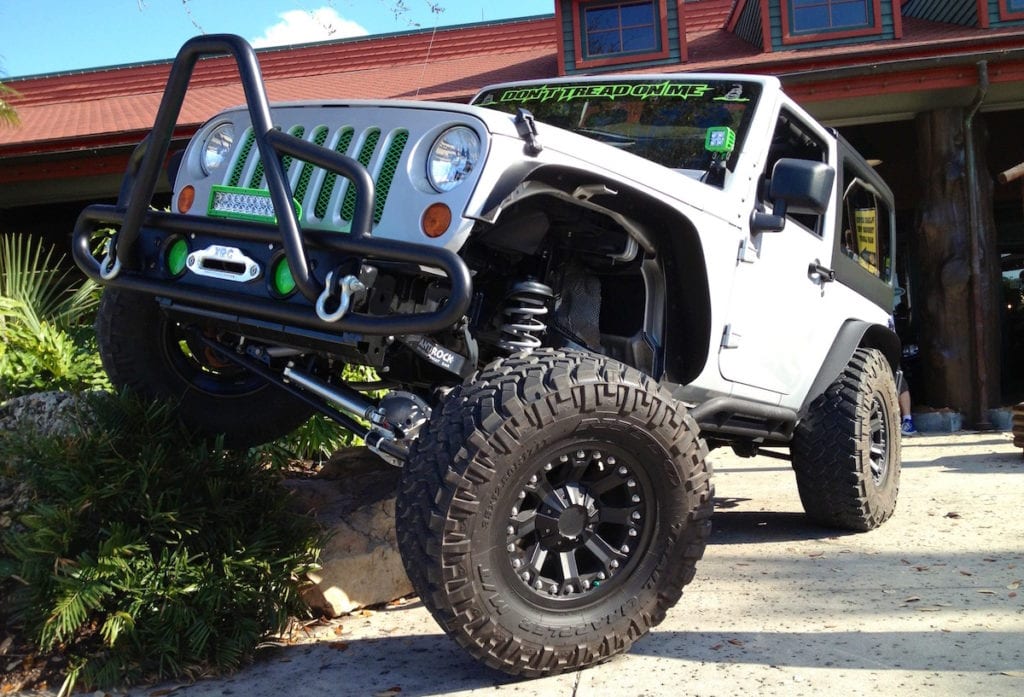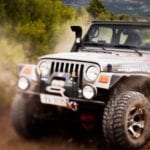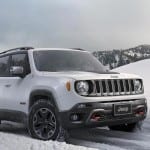Even those who don’t like cars have had this type of dream. You know the dream I’m talking about – buying a Jeep Wrangler used, throwing a lift on it with some beefy tires, and then looking like a total badass going down the road. For many, this creates a lift first and ask questions later approach. You’re too busy being excited about what your rig will look like with a lift kit, and didn’t even bother to consider whether you should actually lift your Jeep in the first place. If you just want to look cool going down the road, then this probably isn’t the right reason to lift a Jeep. If you don’t plan on off-roading, then all your doing is increasing your Jeep’s chance of a roll over — due to its newly lifted higher center of gravity — and reducing its already abysmal fuel economy.
If you are okay with a higher center of gravity and stopping at the gas pump more frequently, then by all means go ahead. For those who are truly interested in lifting a Jeep for off-road travel, sit tight and grab a snack. Lifting 101 is now in session…
What’s the Purpose of a Lift?
Now that we’ve covered why you shouldn’t lift a Jeep if you don’t plan on off-roading, it’s time to discuss what the entire purpose of a lift is. While it’s true that lifting a Jeep and throwing some larger tires on it does make you look like a certified badass, your street-cred isn’t the real purpose of a lift.
Instead, a lift is designed to improve the off-roading capability of your rig. In particular, a lift is used to give the Jeep better ground clearance. But, simply throwing a suspension or body lift kit in doesn’t give it more ground clearance. The only way to get more ground clearance is to throw bigger tires on a vehicle. What’s the only way to throw bigger tires on a vehicle? A lift kit.
Therefore, a lift kit is simply a means to an end, and it’s important that you pick the right one.
The Right Way to Lift your Wheelin’ Rig
Something you need to understand about lift kits is they’re all relative to the purpose of your Jeep. As in, what are you looking to get out of or do with your lifted Jeep? In order to decide, it’s best to divide the lifts on the market into different sizes. After you’ve figured this out, then you can decide what specific type of lift to get.
Smaller Lift
A small lift will do fine. It nets you 1.5-to-2-inches of lift, which is just enough to run 31” tires or provide a little more clearance under the transfer case. This lift is cheap and quick, but provides very little off-road capability compared to the other two because your used Wrangler will still maintain its factory ride, A.K.A, stock performance.
Medium Lift
Room for 32 and 34-inch tires, new shocks, and anywhere from 2” to 3.5-inches of lift, a medium lift gets you amazing clearance for a reasonable price, and provides a very noticeable increase in off-road capability. For many off-roaders, this is a great place to start. For some, it’s all you’ll ever need. The best part? The on-road capability is still maintained.
Bigger Lift
It’s the most expensive of the three sizes of lift mentioned, and lets you slap on 35-inch tires, thanks to 4-plus inches of additional space. In turn, it gives you great off-road capability and the best amount of ground clearance. But, it should only be installed by experienced off-roaders. Why? Because, these lifts essentially re-design the entire geometry of the front-end, and come with a pile of parts that need to be installed in order to make it work.
Keep in mind, this is just a starting point. There is still a lot more research to be done, considering that lift kits will replace some stock mechanical parts of a Jeep. Not to mention, you’ll have to decide between getting a body lift or suspension lift. But, that’s the next step. For now, just figure out why you want an off-road Jeep, what you’re looking to get out of it, and how big of a lift you’ll need to accomplish your goals.




